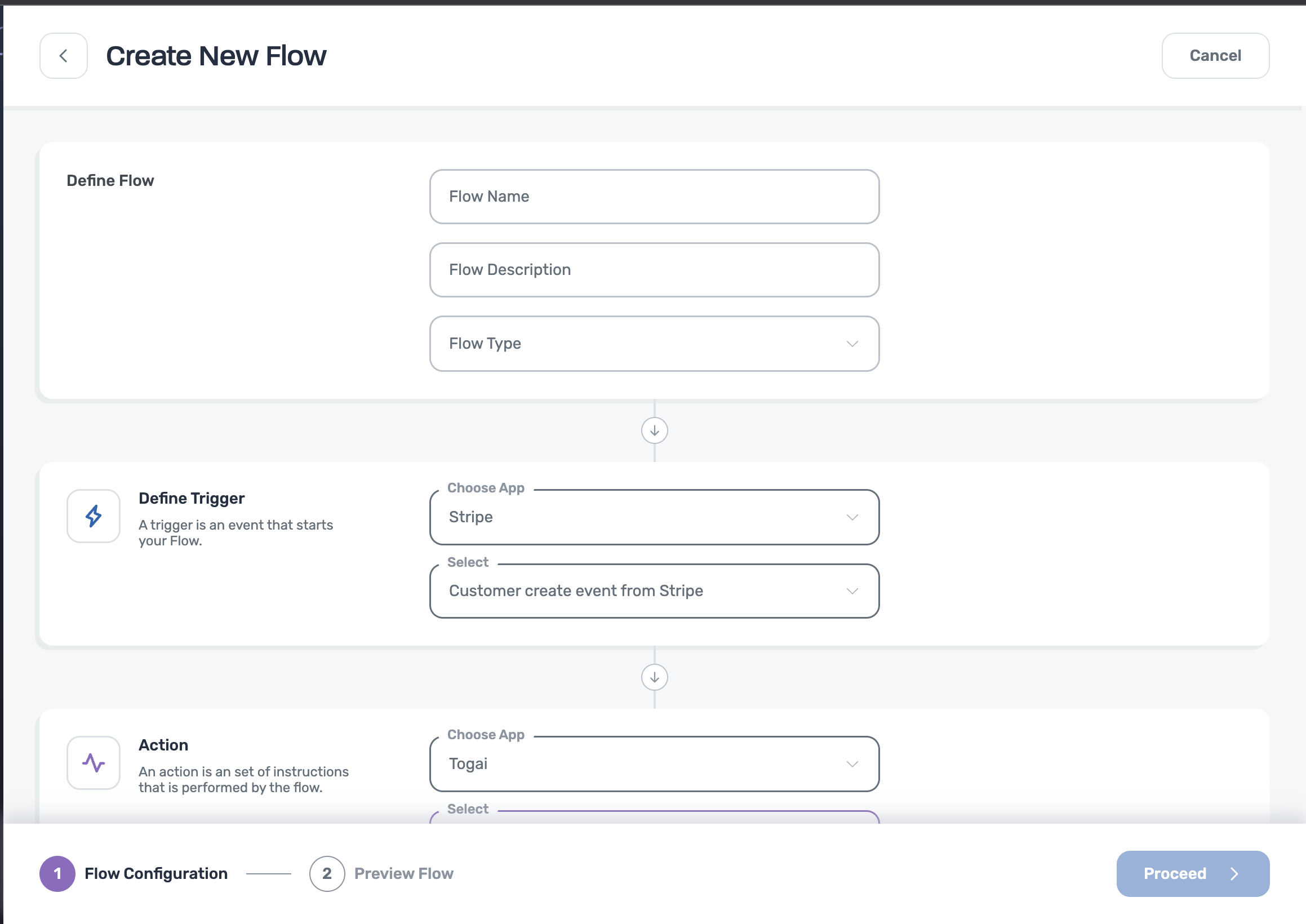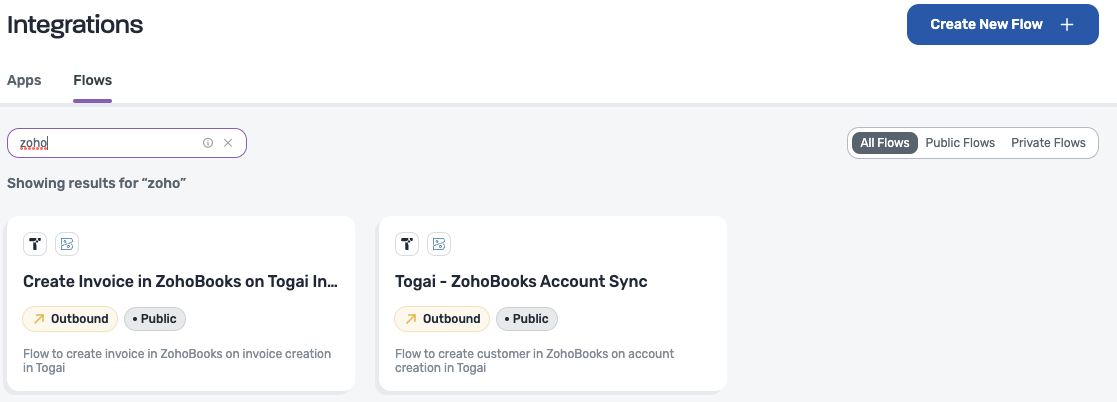Installation of App Instances
- Navigate to the Integrations section from the left navigation bar in Togai
- Click on
Appsto access the list of apps with integration support - Select
ZohoBooksfrom the available apps - Click on the
+Add connectionbutton !](/docs[/integrations/images/e9f8816-image.png) - App link name: Provide a name for this connection
- Client ID: Go to your ZohoBooks account and create a Self Client . Once you create this client, you’ll get the
Client IDandClient Secret. - Self Client Code: You can then generate authorization code by filling valid scope details and setting the time duration under
Generate Code.
Admin Center on the left nav bar. Click on the API tokens tab. Then click on the ‘Generate new token’ button.
Flows and Automation
- To enable flows, go to the “
Flows” section within Integrations - Select the desired flow from the available options or create a new flow to meet your requirements. You can create a new flow by clicking on the “
Create New Flow+” Button
- To create a new flow:
- Enter the flow name and description
- Select the flow type from the dropdown
- Inbound Flow - based on third party events(eg: ZohoBooks), actions are triggered in Togai
- Outbound Flow - based on events occurring in Togai, changes are made to the connected third party app
- Define triggers by choosing the source application from where the flow starts
- Select a predefined trigger from the dropdown list
- Next, define an action which makes the desired changes by selecting the destination app
- Select a predefined action from the dropdown list. You can add multiple actions.
- Lastly, preview the flow and save changes
Else, choose an existing flow and select+Add Connection
Now, when a new customer is added in Togai, it is synced in ZohoBooks as well. To refer to customers in ZohoBooks or Togai, you can obtain the customer ID and account ID. In Togai, go to Customers, select an account, and find the customer ID and account ID under the
Settings tab. Use these IDs to reference the customer in ZohoBooks, or vice versa.
Available Flows

- Sync accounts created from Togai to ZohoBooks
- When a new customer is created in Togai,
- The corresponding account will be created in ZohoBooks
- You can see this mapping of IDs in the Settings tab for that customer.
- Create an invoice in ZohoBooks on Togai invoice
- Event data is ingested into Togai using Togai APIs.
- At the end of the billing cycle, an invoice in Togai is automatically generated. You can see this invoice in the ‘Invoices’ section
- When the ongoing invoice gets converted into a generated invoice, the invoice is synced from Togai to ZohoBooks for invoice payments.
Customer ID and Account ID
To refer to customers in ZohoBooks or Togai, you can obtain the customer ID and account ID.- In Togai, go to Customers, select an account, and find the customer ID and account ID under Settings.
- Use these IDs to reference the customer in ZohoBooks, or vice versa.

